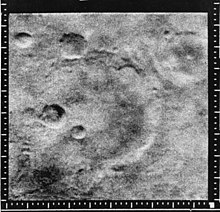Based on experiences with Earth, the environment of a planet can be
altered deliberately; however, the feasibility of creating an
unconstrained planetary biosphere that mimics Earth on another planet
has yet to be verified. Mars is usually considered to be the most likely candidate for terraforming.
 Carl Sagan, an astronomer, proposed the planetary engineering of Venus in an article published in the journal Science in 1961.Sagan imagined seeding the atmosphere of Venus with algae, which would convert water, nitrogen and carbon dioxide into organic compounds. As this process removed carbon dioxide from the atmosphere, the greenhouse effect
would be reduced until surface temperatures dropped to "comfortable"
levels. The resulting carbon, Sagan supposed, would be incinerated by
the high surface temperatures of Venus, and thus be sequestered in the form of "graphite or some involatile form of carbon" on the planet's surface. However, later discoveries about the conditions on Venus made this particular approach impossible. One problem is that the clouds of Venus are composed of a highly concentrated sulfuric acid
solution. Even if atmospheric algae could thrive in the hostile
environment of Venus' upper atmosphere, an even more insurmountable
problem is that its atmosphere is simply far too thick—the high
atmospheric pressure would result in an "atmosphere of nearly pure
molecular oxygen" and cause the planet's surface to be thickly covered
in fine graphite powder.
This volatile combination could not be sustained through time. Any
carbon that was fixed in organic form would be liberated as carbon
dioxide again through combustion, "short-circuiting" the terraforming
process
Carl Sagan, an astronomer, proposed the planetary engineering of Venus in an article published in the journal Science in 1961.Sagan imagined seeding the atmosphere of Venus with algae, which would convert water, nitrogen and carbon dioxide into organic compounds. As this process removed carbon dioxide from the atmosphere, the greenhouse effect
would be reduced until surface temperatures dropped to "comfortable"
levels. The resulting carbon, Sagan supposed, would be incinerated by
the high surface temperatures of Venus, and thus be sequestered in the form of "graphite or some involatile form of carbon" on the planet's surface. However, later discoveries about the conditions on Venus made this particular approach impossible. One problem is that the clouds of Venus are composed of a highly concentrated sulfuric acid
solution. Even if atmospheric algae could thrive in the hostile
environment of Venus' upper atmosphere, an even more insurmountable
problem is that its atmosphere is simply far too thick—the high
atmospheric pressure would result in an "atmosphere of nearly pure
molecular oxygen" and cause the planet's surface to be thickly covered
in fine graphite powder.
This volatile combination could not be sustained through time. Any
carbon that was fixed in organic form would be liberated as carbon
dioxide again through combustion, "short-circuiting" the terraforming
process
 Carl Sagan, an astronomer, proposed the planetary engineering of Venus in an article published in the journal Science in 1961.Sagan imagined seeding the atmosphere of Venus with algae, which would convert water, nitrogen and carbon dioxide into organic compounds. As this process removed carbon dioxide from the atmosphere, the greenhouse effect
would be reduced until surface temperatures dropped to "comfortable"
levels. The resulting carbon, Sagan supposed, would be incinerated by
the high surface temperatures of Venus, and thus be sequestered in the form of "graphite or some involatile form of carbon" on the planet's surface. However, later discoveries about the conditions on Venus made this particular approach impossible. One problem is that the clouds of Venus are composed of a highly concentrated sulfuric acid
solution. Even if atmospheric algae could thrive in the hostile
environment of Venus' upper atmosphere, an even more insurmountable
problem is that its atmosphere is simply far too thick—the high
atmospheric pressure would result in an "atmosphere of nearly pure
molecular oxygen" and cause the planet's surface to be thickly covered
in fine graphite powder.
This volatile combination could not be sustained through time. Any
carbon that was fixed in organic form would be liberated as carbon
dioxide again through combustion, "short-circuiting" the terraforming
process
Carl Sagan, an astronomer, proposed the planetary engineering of Venus in an article published in the journal Science in 1961.Sagan imagined seeding the atmosphere of Venus with algae, which would convert water, nitrogen and carbon dioxide into organic compounds. As this process removed carbon dioxide from the atmosphere, the greenhouse effect
would be reduced until surface temperatures dropped to "comfortable"
levels. The resulting carbon, Sagan supposed, would be incinerated by
the high surface temperatures of Venus, and thus be sequestered in the form of "graphite or some involatile form of carbon" on the planet's surface. However, later discoveries about the conditions on Venus made this particular approach impossible. One problem is that the clouds of Venus are composed of a highly concentrated sulfuric acid
solution. Even if atmospheric algae could thrive in the hostile
environment of Venus' upper atmosphere, an even more insurmountable
problem is that its atmosphere is simply far too thick—the high
atmospheric pressure would result in an "atmosphere of nearly pure
molecular oxygen" and cause the planet's surface to be thickly covered
in fine graphite powder.
This volatile combination could not be sustained through time. Any
carbon that was fixed in organic form would be liberated as carbon
dioxide again through combustion, "short-circuiting" the terraforming
processSHAPING THE UNIVERSE
From the clerks at our 14 Prospective Colony Permit offices to the metal workers building brand new terraform technology










